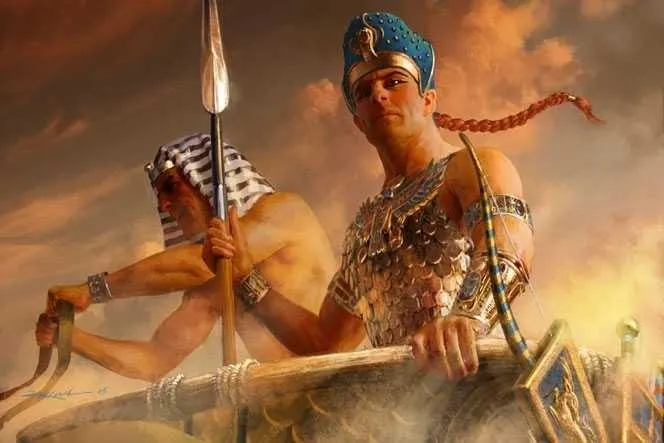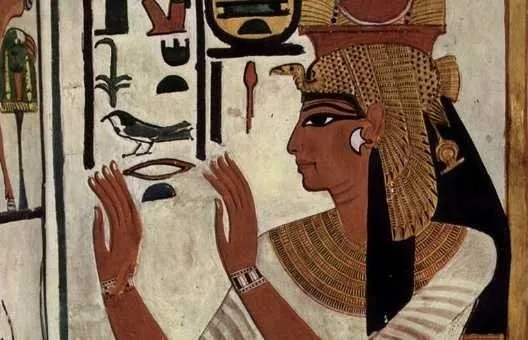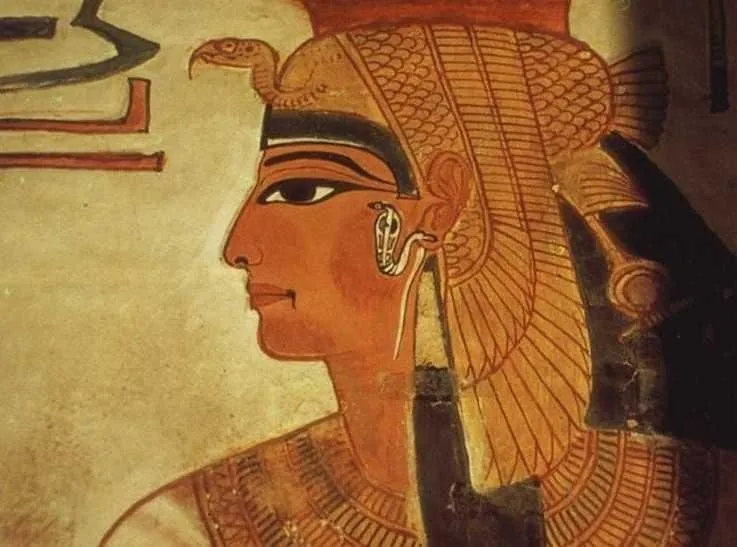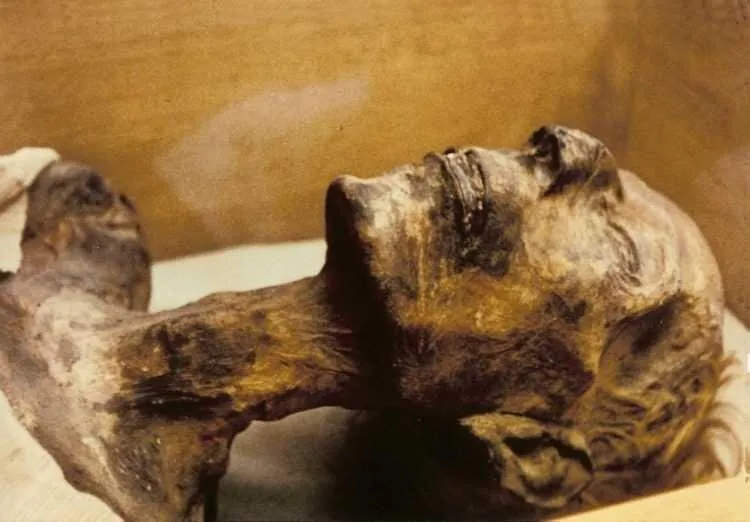A large complex of tombs in Thebes, the temples at Abu Simble hall in the Karnak temple complex in Abydos, and hundreds of other temples, temples and monuments built by Ramses II of.

Many historians claim that during his reign Egyptian art and cultural development reached its peak, and the famous tomb of Nefertari (Ramesses II's main favorite and wife), with magnificent wall paintings is a testament to the truth of this claim. Nefertari images appear on the walls of temples and statues throughout the reign of Ramesses II, and his tomb, though it was looted, it is a unique piece of decorative art.

After the death of his beloved Nefertari, Rameses was appointed to the throne and granted the title of queen, the wife of Pharaoh's reign, Isitnofret's second wife, and after his death, and his daughter became a loving wife of the longevity of Pharaoh. Nevertheless, it appears that Nefertari's memories never leave Rameses, and all the next pictures of another wife of Ramesses always have a resemblance to the face of his first beloved wife. But we have to pay tribute, the governor always belongs to the children of all his wives with the same respect, as their mother did.

From the beloved Nefertari in Ramses II son ostalcya Amonherhepshef and from Isitnofret (second queen) son of Haeumas and Merneptah, and all three of them, at the urging of his father, and reverence to all wives and concubines of Ramesses II and his sons, did not stand out son right of queen.

Exodus ("exodus from Egypt") - the biblical legend of slavery of the Jews (Israel) in Egypt, exiting their masses with the will of God from Egypt under Musa, the theophany at Mount Sinai (Horeb), the conclusion of the covenant between God and man the chosen ones, as well as about the journey of the Jews before the conquest of Canaan. Set in the Pentateuch (especially in Exodus, chapters 1-15).

[
Despite the fact that the name Ramesses is often associated with the history of the expulsion of the Jews from the land of Egypt, there is absolutely no evidence to support this relationship. (And all the inventions of filmmakers, such as the more contemporary "Exodus: Gods and Kings" cartoon of "Exodus: Gods and Kings" (2014) inspired by the Cecil B. DeMille film "The Ten Commandments" (1956) and facts not history).
In the book of Exodus mentions Per-Ramses (the capital built by Ramesses II), as one of the cities where Israeli slaves worked, and from which they left the state of Pharaoh (in Exodus 01:11, 00:37, 33: 3 and 33 : 5). But there is no documentary evidence of a mass exodus from this city or any other Egyptian city, and the researchers have not found the record that Per-Ramzes was built with the involvement of the slave power.
archaeological excavations in the Great Pyramids of Giza and elsewhere have opened up a lot of evidence that draws Egyptian skilled workers to construction projects of Ramesses II (as, indeed, and other ancient Egyptian rulers), and for menial jobs, pyramid. Everyone who voluntarily agrees to work for Pharaoh is paid salary, as well as rigorous accounting and reporting. The names of Builders are included in the special list, and it is believed that those who participate in the construction of a temple or pyramid with Pharaoh's life, will be summoned in the next realm of Osiris, the god of the dead, for the construction of a heavenly object. (Poor builders, when they plow, they also have to put the bags of cement and bricks in the hereafter).
Among other things, assuming that Ramesses could lead to the expulsion of the Jews from Egypt, it is unclear why he did not mention in any of the many descriptions of his life. As is known, Ramesses II carefully wrote down all his accomplishments, and even occasionally adorn some facts that are inconsistent with historical reality. The Egyptians, since the advent of written languages (around 3200 BC) have kept various descriptions of the existence of other nationalities, but none of these records indicates the presence of a large number of Jews, and even more to their mass exodus.

Since the announcement of the cruel Ramesses, Pharaoh stubbornly drove the Jews out of Egypt, that is not true because it does not fit the character of the King, who is a great and noble ruler.
Various researchers have tried to identify the Pharaoh Exodus with the following rulers of Egypt:
• Ahmose I (1550-1525 .. BC)
• Thutmoses III (1479-1425 BC ..)
• Ramses II (1279-1213 BC ..)
• Merneptah (1212-1202 BC)
• Setnacht (1189-1186 BC)
At Yahmos I showed the supporters of the hypothesis "Hykso", as he successfully fought with this country and captured the Hyksos-Avaris capital. During the reign of Thutmose III, there was a textual date, the expulsion of the Jews from Egypt. In Ramesses II, who did a grandiose construction work involving a large number of people, saw the oppressor of the pharaoh. Under Merneptah, the son of Ramesses II, Egypt began to weaken, so the government of this pharaoh could also be considered a possible time for the exodus. The absence of mummies from the pharaoh also serves as an opportunity for discussion. However, then Merneptah's mummy was discovered.
Truth or fable
In Ancient Egypt of the twentieth century and researchers during the reign of Ramesses II proposed several contradictory opinions about the importance of the 19th dynasty of the pharaoh. Some argue that Ramesses is more of a "performer" and a popularizer than himself rather than an effective ruler, others argue otherwise. However, records of the reign of Ramesses II, as written and architectural evidence, temples and monuments, show that while the Egyptian ruler is a strong and prosperous country.
Ramses, one of the few pyramids of the kings of the land, he lived long enough, had his reign to take part in two Heb Sed ceremonies, celebrations, held every 30 years, designed to rejuvenate Pharaoh and co-ruler of a goal (successor).
Ramses guarantees the security of state borders, increases his wealth and expands the scope of trade. And even if it is a bit of an overkill in its accomplishments, boasting of their accomplishments in temple and image inscriptions, it is possible to say, it has good reason to be proud of themselves.
Mummy of Ramses Agung, kept at the National Museum of Cairo, confirms that the Pharaoh was over 1.8 meters high, with strong, prominent jaws, thin noses and full lips (but to me, both monster, not mummies - red-haired, and despite the mummy, but it still looks that this is an elderly parent).

Ramses suffered from teeth (some researchers say the mummy of Ramesses II, parents died of untimely teeth, as well as the ancient predecessor of Queen Hatshepsut), severe arthritis, thrombophlebitis, and most likely died of old age or heart failure.
generations throughout Egypt, hundreds of years after the death of Ramesses II, calling it an "ancestor," and many of the Pharaohs after the coronation were named after him. In fact, some later Egyptian kings, such as Ramesses III (Pharaoh dynasty XX 1185 - 1153 BC), were regarded as the best rulers, rather than him, but none of them surpassed Ramesses Agung's fame in the minds and hearts of the ancient Egyptians